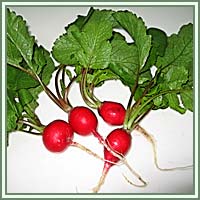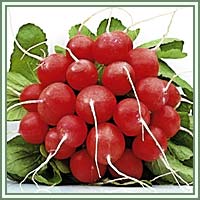RADISH
Raphanus sativus
Common name: Radish
Latin name: Raphanus sativus
Other names: Garden Radish, Redish, Bier Radish, Daikon
Family: Brassicaceae
Habitat: Radish is native to Asia. Nowadays, it is grown and consumed as a garden vegetable throughout the world
Description: Radish is an annual or biennial species of garden vegetable. It can vary in size, growing from 10 cm to 1.8 meters in height. It has a long and round, pungent root. Root also varies in size, shape and color. They can have red, pink, green and even black skin, and white or red fleshy part. Radish leaves are rough, green and lobed, toothed along the margins. Flowers are cross-shaped and four-petaled, again varying in color: white, violet, pink or purple.
Parts used: Root
Useful components: Raphanin, glucosilinates, vitamin C, volatile oil.
Medicinal use: Radish is considered to be an antiseptic, antirheumatic, appetite stimulant, diuretic, diaphoretic and rubefacient. Radish is an excellent source of vitamin C, and a powerful immune booster. It has a long history of medicinal use. For example, black radish has been used in folk medicine in cases where bile stimulation is needed, and juice made from the root has been used against stomach disorders. White radish is considered to be very effective in cases of sore throat and indigestion.
Safety: Radish could cause indigestion in some cases. It shouldn’t be used in patients with ulcers, gastritis and thyroid problems. Some herbs could react with certain medication. Therefore, it is advisable to consult your doctor before consumption of any herb.

